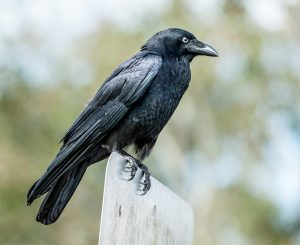December 4, 2024
The Ebiil Society: Champions of Palau
Ann Singeo, founder of our partner organization the Ebiil Society, shares her vision for a thriving Palau and a flourishing world of indigenous science!
We use cookies to help you navigate efficiently and perform certain functions. You will find detailed information about all cookies under each consent category below.
The cookies that are categorized as "Necessary" are stored on your browser as they are essential for enabling the basic functionalities of the site. ...
Necessary cookies are required to enable the basic features of this site, such as providing secure log-in or adjusting your consent preferences. These cookies do not store any personally identifiable data.
Functional cookies help perform certain functionalities like sharing the content of the website on social media platforms, collecting feedback, and other third-party features.
Analytical cookies are used to understand how visitors interact with the website. These cookies help provide information on metrics such as the number of visitors, bounce rate, traffic source, etc.
Performance cookies are used to understand and analyze the key performance indexes of the website which helps in delivering a better user experience for the visitors.
Advertisement cookies are used to provide visitors with customized advertisements based on the pages you visited previously and to analyze the effectiveness of the ad campaigns.
Looking to make an impact this Earth Month? Here’s how.

Crows often get a bad rap, but these birds are actually very intelligent and adaptable. Members of the family Corvidae show a capability to learn and problem-solve that is unparalleled among other birds. These clever Australian corvids have learned a new trick: how to eat poisonous Cane Toads.

Cane Toads wouldn’t normally be found in Australian Crows’ habitat. The Cane Toad, a hardy and poisonous amphibian that will eat almost anything, is native to South and Central America but was brought to Australia in 1935 to control native beetles that were destroying sugar cane crops. Naturalists in Australia have spent decades trying to control their spread, but without success. This invasive species is thriving in Australia, because there is plenty for them to eat, and very few that can eat them. Predators such as Goannas, Quolls, and some snakes have tried to eat them, but to no avail. As a result, native animal populations have dropped significantly. But now the plot winds in a different direction, because crows have figured out how to eat these invasive toads.

How do they do it? The crows have learned to avoid the most toxic part of the toad, the large parotid glands on the neck and shoulders. When the toad is threatened, milky white poison called bufotoxin oozes from these glands. Any contact with this poison results in death. According to the Global Invasive Species Database, it can kill lizards, snakes, cats, dogs, and even humans. Crows know to avoid the ooze by holding the toads by their bony brow above the eyes or by their limbs. Then they roll the toads onto their backs and eat the best pieces while avoiding contact with the lethal parts. This technique is a testament to crows’ cleverness; scientists believe that other crows watch and learn while this process is happening. This could explain why crows living 3,000 miles from Brisbane have exhibited similar behaviors.
The crows’ adaptation is fascinating and may help reduce the Cane Toad population, but this alone cannot fully remove the threat. As climate change continues, the Cane Toad’s ideal habitat range will expand. The toads could spread as far south as Sydney and all the way across to Western Australia. Still, there have been encouraging signs; many native predators’ numbers have risen after long term exposure to toads. And now that there is a reliable predator for the Cane toad, perhaps those numbers will continue to improve. We have to tip our hats to these clever birds, being the only animal in Australia so far to find a way to make a meal out of this poisonous invasive toad.
Featured Photo: Tallow Beach, a beach within the range of the Cane Toad. Credit: Richard Rydge
Sources: Science Alert & Australian Geographic
Check out other journal entries we think you might be interested in.
Notifications